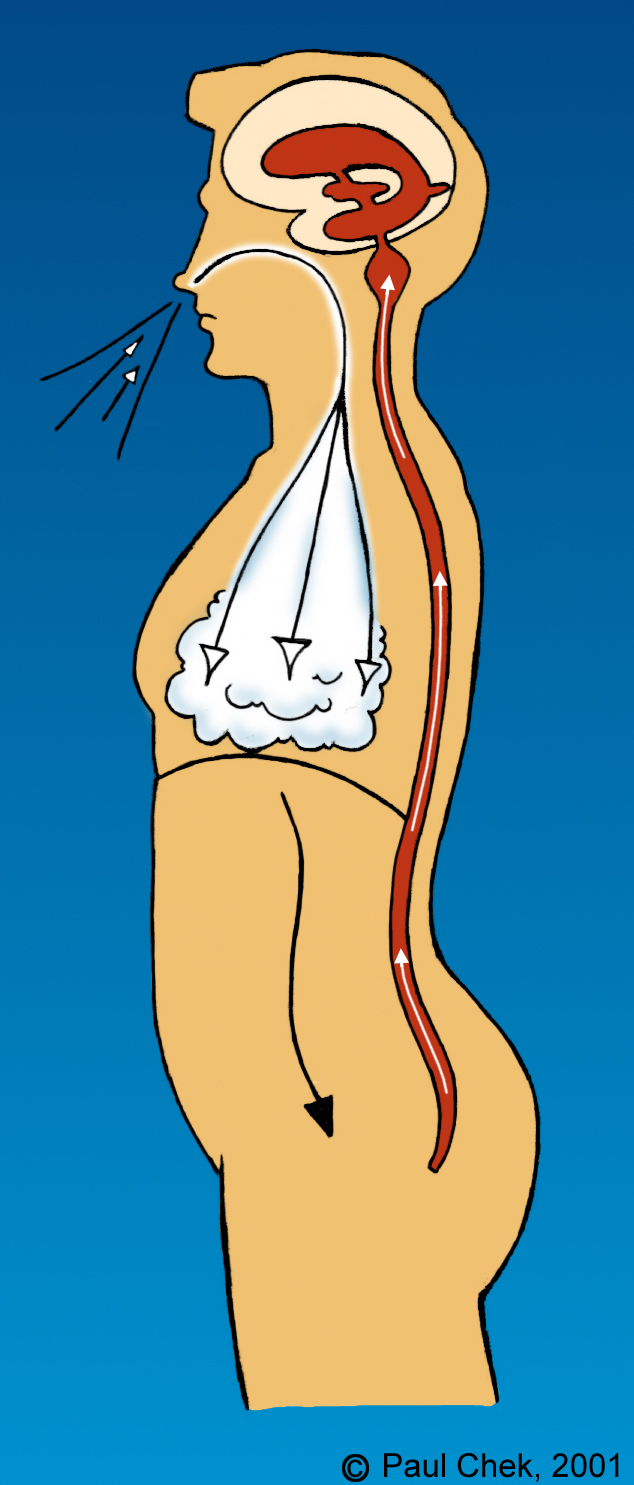 Today’s vlog is the first video of a five-part series about breathing. I have written about breathing before, but as it is such a critical element of life, I felt it was important to cover the topic in more detail.
Today’s vlog is the first video of a five-part series about breathing. I have written about breathing before, but as it is such a critical element of life, I felt it was important to cover the topic in more detail.The average person breathes 25,900 times daily, which correlates to a “normal” resting respiratory rate of 12-16 breaths per minute, according to medical texts. I feel from clinical experience that 6-10 is a more optimal resting respiratory rate and that through proper holistic approaches to restoring optimal breathing, this can typically be achieved.
The Mechanics of Breathing
During inspiration:
- The diaphragm descends
- The rib cage elevates and/or expands in all three planes
- Intrathoracic volume increases
- Intrathoracic pressure decreases
- Exterior air flows into the lungs
During expiration:
- The diaphragm ascends
- The rib cage descends and/or contracts
- Intrathoracic volume decreases
- Intrathoracic pressure increases
- Air in the lungs flows out to the exterior
The way that you breathe has a significant impact on your health. An optimal breathing pattern is 2/3 diaphragm followed by 1/3 chest. However, one of the most common side effects of modern sedentary lifestyles I’ve noticed is how it makes us less effective at breathing. When we sit too many hours and don’t get enough movement, we tend to slouch. When our posture is poor from lack of exercise, our head comes forward and our chest drops downward, crowding our organs. This tends to encourage shallow chest-breathing rather than the healthy, deep breaths that start with our diaphragm.
Breathing and Blood Chemistry
Breathing maintains your acid-alkaline or pH balance, so how we breathe also has a huge influence on the blood gas ratio of oxygen (O2) to carbon dioxide (CO2). You have about 10 billion biochemical reactions a second in the human body, all of which are pH dependent. So, whenever your respiratory rhythm and rate is altered — that could be breathing too fast or too slowly — the acid-alkaline balance is disrupted which, in turn, disrupts your biochemistry. A suboptimal acid-alkaline balance will stress your entire physiology, and your respiratory physiology is tied directly to your psychology. Any shift in pH balance causes a shift in emotion, any shift in emotion causes a shift in perception, and any shift in perception causes a shift in reality.
Your respiratory rate and efficiency of breathing influence whether you use your fight-or-flight nervous system or your rest-and-recovery system. The poor posture and shorter shallow breaths that are part of the sedentary lifestyle activate the fight or flight system, and I’m sure you’re familiar by now with the effects of keeping that system active for prolonged periods of time.
Breathing Pattern Disorders
For the more technically-minded, here are some of the issues that breathing pattern disorders can cause:
- Respiratory alkalosis (a decrease in carbon dioxide with a simultaneous increase in pH)
- Decreased oxygenation of tissues
- Increased anxiety and apprehension
- Heightened pain perception
- Smooth muscle constriction
- Increased excitability of corticospinal system
- Speeding up of spinal reflexes
- Changes in serum calcium and magnesium
What Elevates Respiration Rates?
There are many factors that can change someone’s rate of breathing. Here are a few common ones to watch out for:
- Stress and anxiety can increase or decrease breathing rates
- Food intolerances – dairy mucous-producing foods – itchy ears, sores on skin, dull feeling
- Allergies – airborne, dust, occupational solvents, molds, pollen, fumes
- Parasites – ascaris in the lungs and throat and nasal passages
- Nutrition – excess sugar and meat – increases respiration to alkalinize pH. You can’t improve someone’s respiration rate and patterns if they continue to eat sugar.
- Medical drugs – increases mucous as the liver tries to deactivate and synthesize toxins
- Craniofacial growth disorders
- Nasal problems, such as someone with a nasalated tone or a history of broken noses
- Over-training the abdominals
- Grief
- Fourth Chakra issues
- Low back pain and pain in general
- Visceroptosis
So as you can see, it is critical for optimal health and function that we breathe correctly. In this video, I show you the basics of good breathing, using the correct technique and major respiratory muscles.
Love and chi,
Paul Chek







